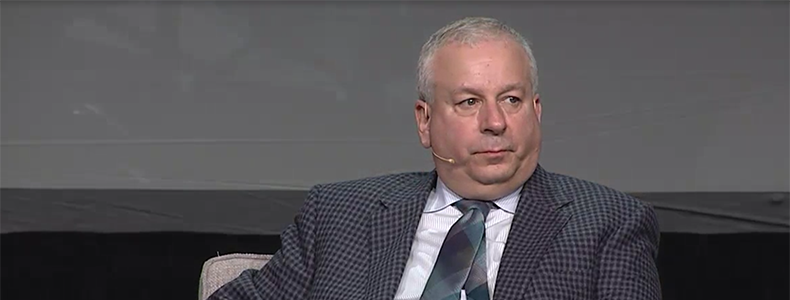The much-awaited Strategic Investment Conference kicked off last week with David Rosenberg of Gluskin Sheff. In his introduction, Rosenberg said he struggled over his presentation title before settling on “Year of the Dog: Will It Bark or Bite?” (Spoiler: The answer is “bite.”)
[Tweet "It’s an ugly picture if you’re looking for value in equities."]He started his presentation by running through a list of bearish investors who have thrown in the towel, and then moved on to share his own metrics.
Valuations are stretched
Valuations are elevated no matter the metric: Forward P/E, price/sales, price/book value, enterprise value/EBITDA. Looking at normalized charts over time, they’re all presently at 83rd percentile or higher. Price/sales is at 99th percentile. It’s an ugly picture if you’re looking for value in equities.
He shared a scary quote from Howard Marks:
“Most valuation parameters are either the richest ever or among the highest in history. In the past, levels like these were followed by downturns. Thus a decision to invest today has to rely on the belief that ‘it’s different this time.’ I’m convinced the easy money has been made.”
Rosenberg then pointed out that even the Fed admits that valuations are high, and they will not remain high for long. The Shiller CAPE ratio now stands at its second-highest level in decades. How long will that last?
History has shown that high P/E ratios are usually followed by years of below average returns in equities.
The Fed's 2% inflation target makes no sense
Then, Dave Rosenberg criticized the Federal Reserve over its 2% inflation policy. To paraphrase, he said “on what planet does 2% annual inflation constitute price stability?” Prices can’t be rising and stable at the same time. This makes no sense.
Furthermore, why 2%? Why not 1%? Whatever the inflation target, the Fed has proven unable to hit it, so maybe it’s time to rethink this whole idea.
Rosenberg shared a really interesting comparison of Federal Open Market Committee members—i.e. all the Governors plus the voting Fed bank presidents. At the beginning of 2017, there were no hawks in that group. Between departures, additions, and the yearly voting rotation, the FOMC's composition shifted radically since then. Now it’s made up of four hawks, one dove, and one unknown, by Rosenberg’s assessment. This should not be of comfort to anyone who hopes the Fed will pull back on the tightening or balance sheet rolloffs.
Rosenberg shifted to late-cycle behavior and looked at the erosion in credit quality.
Credit is flashing warnings
He highlighted the fact that former big buyers of corporate paper have started to “pull back.” This is an area that has not received the attention that it should. And looking at the retail side, there are signs now the consumer is beginning to struggle to make credit card payments.
Rosenberg quoted new Fed chair Powell as saying that we are at the point of encouraging risk-taking. One of Powell’s primary concerns is that more accommodative policy could lead to frothy financial conditions and eventually undermine financial stability. And yet, his predecessor Janet Yellen saw no “red flags” regarding financial stability.
Source: Mauldin Economics














